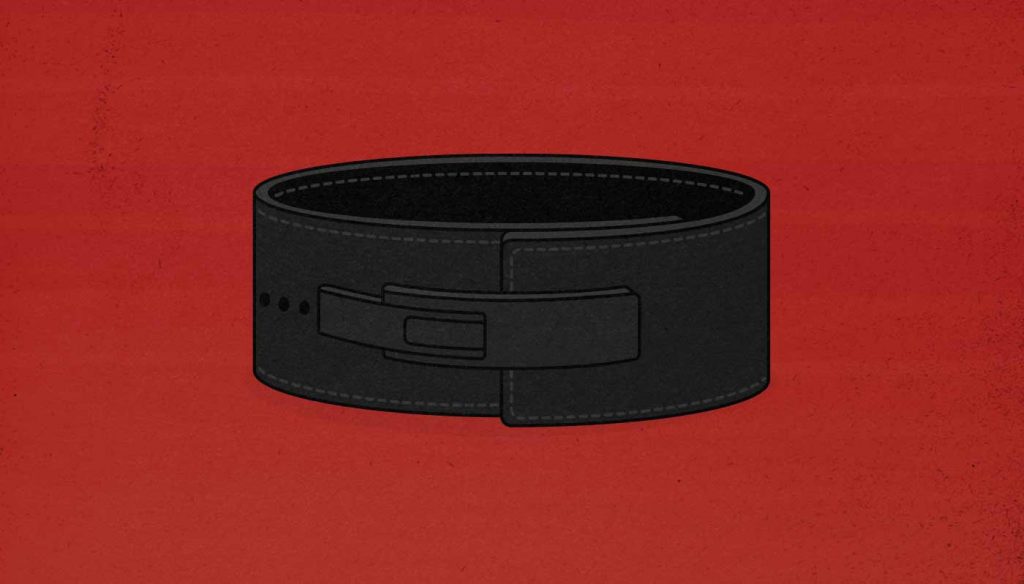
Are Weight Lifting Belts Good for Building Muscle?
Some argue weight lifting belts help us build muscle because they allow us to lift more weight while protecting our lower backs, and there’s some truth to that. If we can lift more weight because our spines are held rigid, that can certainly help us stimulate more muscle growth.
Others argue that we shouldn’t wear weight lifting belts outside of powerlifting because they prevent us from strengthening our lower backs, abs, and obliques. That doesn’t seem to be true, but lifting belts do indeed increase intra-abdominal pressure, which isn’t necessarily a good thing for everyone. Plus, not all spinal experts recommend weight lifting belts, especially when our goal is merely to gain muscle size. So there’s some nuance here.
In this article, we’ll talk about:
- Whether weight lifting belts can help us build more muscle.
- If weight belts increase our risk of hernias, varicoceles, and hemorrhoids.
- How weight belts impact our risk of lower back injuries.
- How much stronger weight belts can make us.
- Which belts are best for building muscle.
- And how best to use them.
- What Is a Weight Lifting Belt?
- What Do Weight Lifting Belts Do?
- Do Weight Lifting Belts Make Our Cores Weaker?
- Are Weight Lifting Belts Dangerous?
- Are Weight Belts Bad for Our Lower Backs?
- Should You Use A Weight Belt?
- Buying a Weight Lifting Belt
- Which Weight Lifting Belt is Best?
- How to Use a Weight Lifting Belt
- When Should You Use a Weight Lifting Belt?
- Summary

What Is a Weight Lifting Belt?
A weight lifting belt, also known as a lifting belt or weight belt, is a wide belt that cinches firmly around our waists, giving our abs something firm to push up against. This allows us to brace more strongly, it keeps our torsos more rigid, and it prevents our lower backs from becoming a limiting factor, allowing us to lift slightly heavier weights.
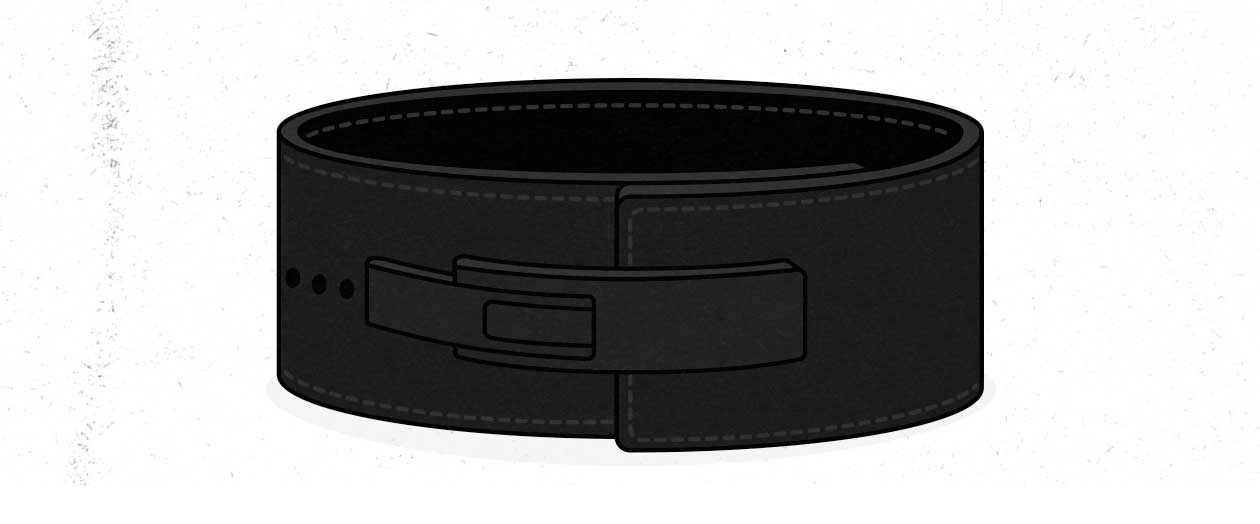
Lifting heavier weights is an obvious benefit for powerlifters, but it may also help people stimulate more muscle growth. That doesn’t mean that weight lifting belts are ideal for everyone, though. So let’s go over the pros and cons.
What Do Weight Lifting Belts Do?
Weight lifting belts give us something firm to brace against when we do the Valsalva manoeuvre, making our torsos more rigid, and improving our ability to transfer force from our lower bodies to our upper bodies. With lifts that are limited by core stability, such as the deadlift and overhead press, lifting belts can help us lift heavier weights and build more muscle.
Of all lifting gear, lifting belts probably give us the most bang for our bulks. They allow us to better stabilize our cores, and so they can help us in two ways:
- Weight lifting belts make us around 5–15% stronger (source), allowing us to lift heavier weights; or we could keep lifting the same weight but do more repetitions; or we could lift the same weight for the same number of reps but accumulate less fatigue in our lower backs. Whichever way we do it, this can allow us to increase our training volumes, allowing us to stimulate more muscle growth (and gain more strength)
- Having a more stable core makes it easier to maintain a neutral spine while doing heavy squats, deadlifts, and overhead presses. This has more to do with our technique than the lifting belt itself, but if we succeed in keeping a more neutral spine, that means quite a bit less shear stress on our spines.
What’s going on here is that the belt allows us to increase our intra-abdominal pressure by bracing forcefully against it, helping our torsos feel sturdier while rowing and overhead pressing. That extra intra-abdominal pressure also allows our hip extensors to contract more forcefully, increasing our strength on lifts like the squat and the deadlift (study).
Some people even like to wear weight lifting belts while doing the bench press because it helps them feel more stable. There’s no known mechanism for why a weight belt would improve our bench press strength, but some lifters swear by it, and there’s no harm to it.
To illustrate how weight lifting belts can help while bulking, imagine that we can normally deadlift 315 pounds for eight repetitions. By wearing a weight belt, we’d be able to bump that up to 345 pounds. Or, if we keep 315 pounds on the bar, we’d be able to add an extra couple of reps or sets. Either way, we’d provoke more muscle growth with that extra stimulation. We’d also be putting more load on our bones and tendons, making our bodies tougher. And we’d even be giving our cardiovascular systems a greater challenge, improving our fitness. That means more muscle growth, more strength grains, tougher bodies, and better general health.
Do Weight Lifting Belts Make Our Cores Weaker?
One concern is that wearing a belt would take the load off of our lower backs, preventing them from getting as strong, and thus putting us at greater risk of injuring our backs outside of the gym. However, Dr Stuart McGill (the foremost expert in spinal health) found that the lower back muscles still work just as hard during compound barbell lifts when wearing a weight belt (study). A similar concern is that wearing a weight belt might stop our abs and obliques from growing stronger. However, again, McGill’s research contradicts that. Ab activation seems similar with and without a lifting belt.
Are Weight Lifting Belts Dangerous?
Some experts believe that weight lifting belts can increase our risk of injury, not just in our backs, but also increasing our risk of developing hernias, hemorrhoids, and varicoceles. Of these experts, Dr Stuart McGill, the leading spinal health researcher, is perhaps the most notable.
McGill is concerned because weight lifting belts increase blood pressure, and so if someone wore a weight belt all day long, they might increase the incidence of varicose veins in the testicles (varicoceles), hemorrhoids, and hernias. However, he notes that “there has been no scientific and systematic investigation of the validity of these suggestions.” Plus, this is an argument against wearing weight belts all day long when working a job that requires doing physical labour. This doesn’t sound like much of an argument against wearing them in the gym.
To get another perspective, I asked a urologist about whether weight belts could cause varicoceles or make them worse. He told me that it shouldn’t be a problem in the context of weight training because the rise in blood pressure would be so brief and intermittent. After all, lifters aren’t wearing their weight belts all day long, just for the few minutes every couple days when doing their squats, deadlifts, overhead presses, and rows. If someone cinches their weight belt, spends a minute doing a heavy set, and then loosens their belt, then all of the pressure is relieved, and blood flow returns back to normal. He told me that it’s the sustained pressure that tends to cause varicoceles, not these intermittent bursts. But again, there’s no good research on this. This is just his educated opinion.
To summarize, wearing a lifting belt can also increase our blood pressure by a good 15–40%, meaning that it might be dangerous for people with blood pressure problems, or for people struggling with varicose veins, varicoceles, hernias, or hemorrhoids (although there’s no proof of this yet).
Are Weight Belts Bad for Our Lower Backs?
No, it doesn’t appear that lifting belts increase our risk of getting a lower back injury. It’s true that lifting weights with an excessively rounded lower back can increase the shear stress on our spines, increasing our risk of injury, but that’s a reason to lift correctly, not a reason to avoid wearing a weight belt.
Returning to Dr Stuart McGill, he warns against wearing a belt becoming an excuse to lift with poor technique. If we’re deadlifting a heavy barbell, we should lift it safely, with or without a weight belt. For instance, when you deadlift, your technique should be like the charging bull, not the scared cat:
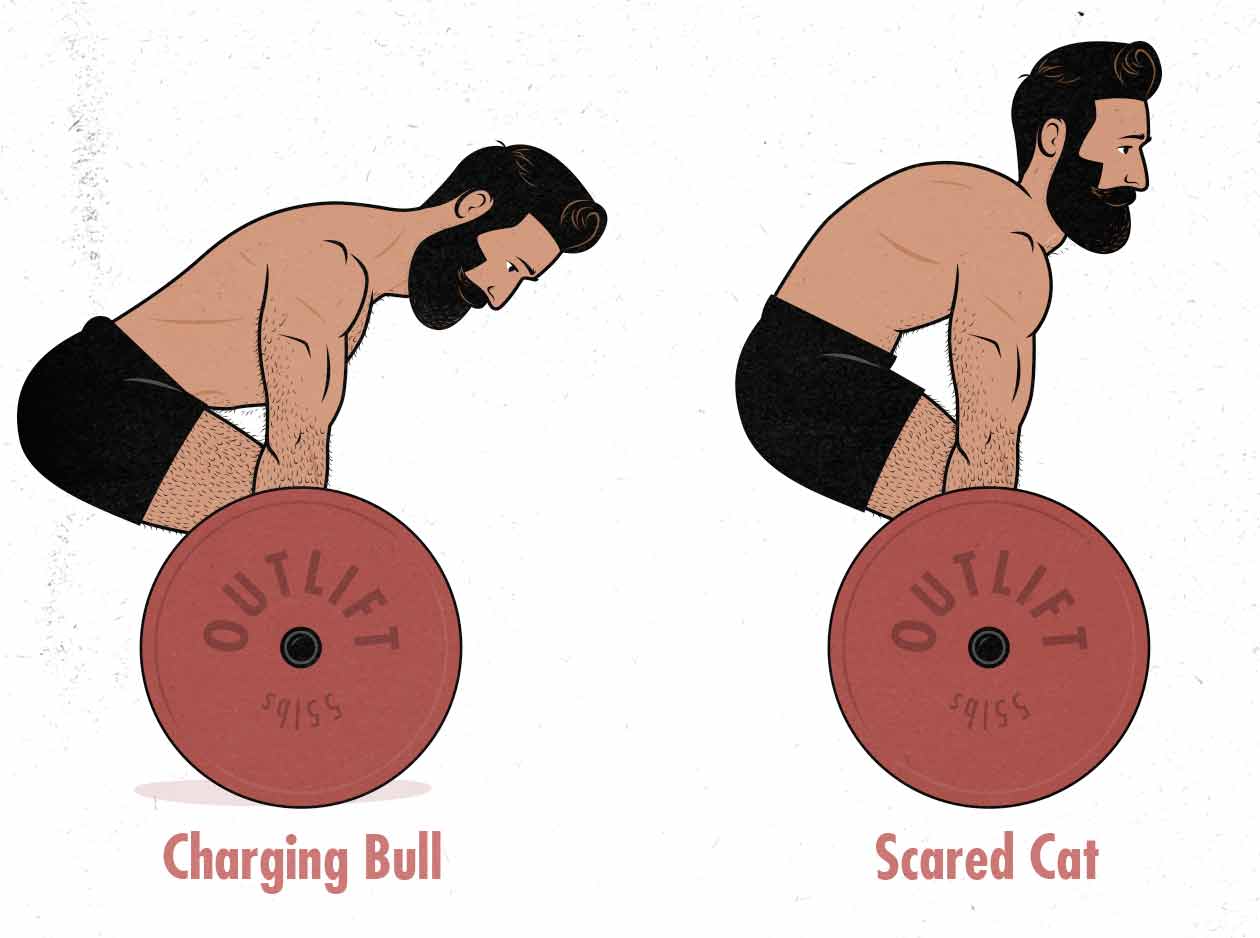
he also points out that if we’re training merely to improve our health, not to gain as much muscle size and strength as possible, then we may as well avoid weight lifting belts. After all, the myriad health benefits of strength training can be gotten with or without a belt (source).
Should You Use A Weight Belt?
There are different opinion about whether the average lifter should wear a weight belt. On the one hand, Dr Stuart McGill points out that if we’re training merely to improve our health, not to gain as much muscle size and strength as possible, then there’s little reason to get a weight belt. After all, the myriad health benefits of strength training can be gotten with or without it (source).
Plus, even as we become intermediate and advanced lifters, there’s never a point where we need a weight belt to continue growing stronger, to continue building muscle, or to keep our workouts safe. We won’t ever be in a situation where we’re lifting so heavy that we need a lifting belt to bolster our lower back. If we decide against getting a lifting belt, our lower back may just limit our strength a little earlier, and that’s all. There’s nothing stopping us from safely deadlifting five hundred pounds whether we get a lifting belt or not.
I eventually did decide to get a weight lifting belt, and I’ve grown to love using it. My back feels sturdier and stronger, and it no longer gets fatigued as easily. On the other hand, Marco still lifts without a belt despite having lifted for over a decade. Even when coaching college, professional, and Olympic athletes, weight belts are never a staple in his training. They’re completely optional.
And if we do have a bit of spinal flexion during our heaviest sets—which is probably fine—then we should at least keep it within the neutral range, like so:
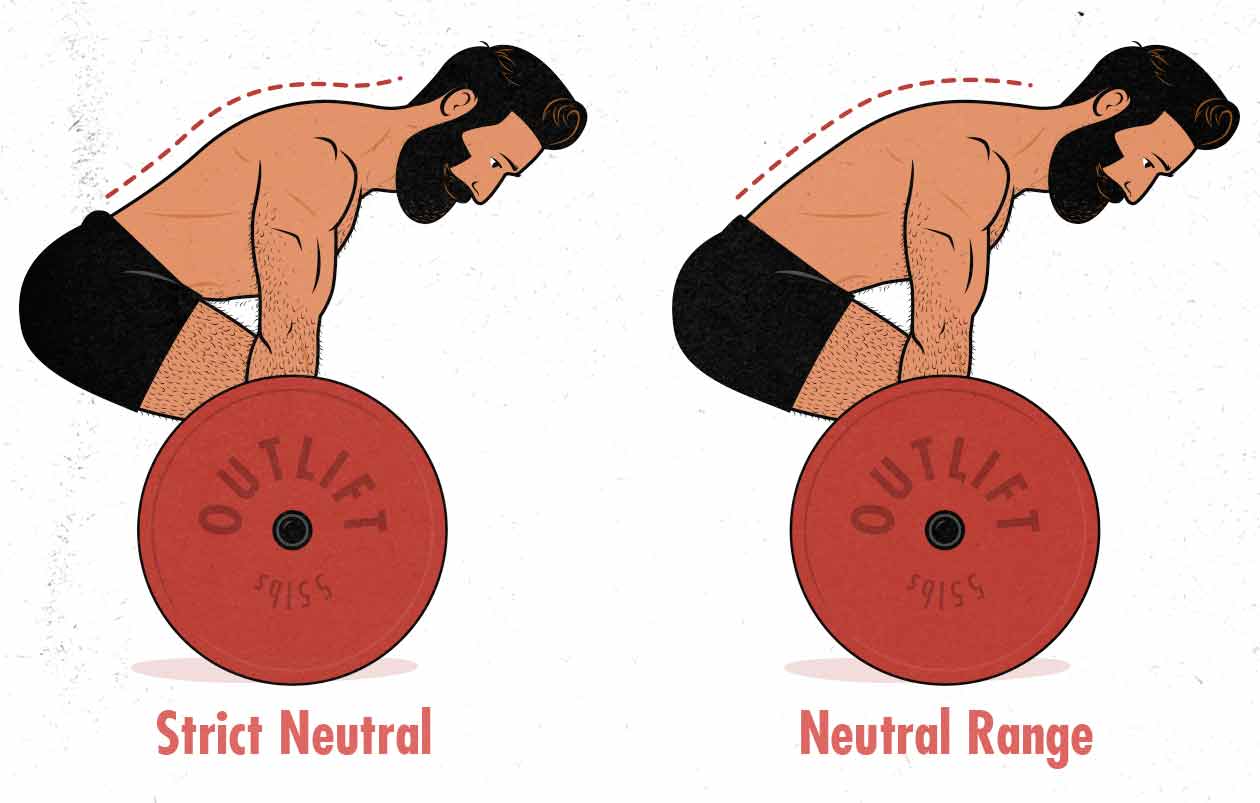
Even with a weight lifting belt, we still need to lift with proper technique. The belt doesn’t necessarily protect us, it just allows us to hold ourselves more rigid in the proper position.
If you decide not to wear a weight belt, rest assured that you can gain size, strength, and improve your health with or without a lifting belt.
Buying a Weight Lifting Belt
When I first bought a weight lifting belt, I got a thick, double-pronged lifting belt. I found it annoying to put on, uncomfortable to wear, and if anything, it seemed to make lifting weights harder. After experimenting with it for a few workouts, I banished it to the closet, and whenever I needed to go in there to get a coat, I would kick it out of spite.
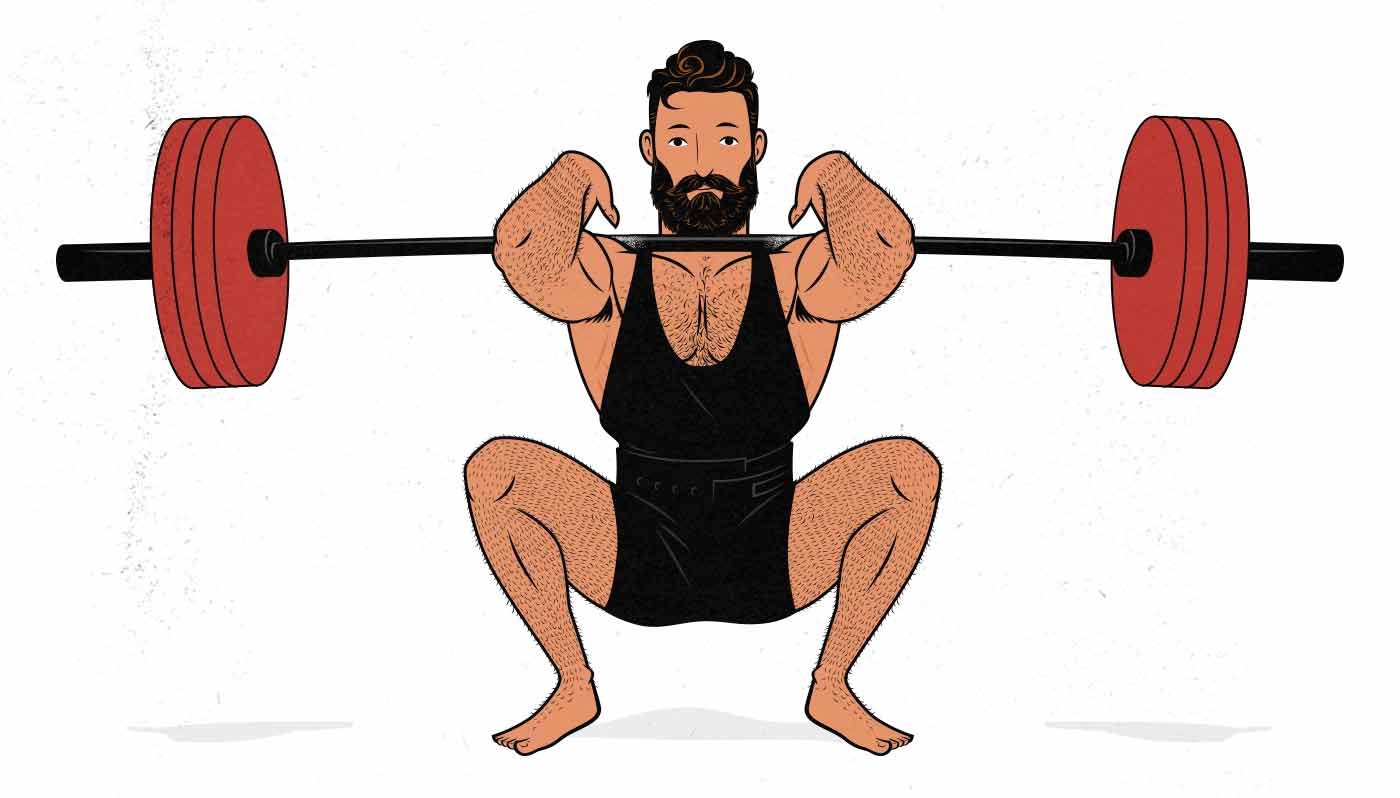
A few years later, after being reminded of the many benefits of weight lifting belts by this Stronger by Science article, I decided to give it another go. The first thing I realized was that I shouldn’t have gotten a double-pronged lifting belt. A single-prong or lever belt would have served me much better. The next thing I released is that all of the high-quality leather lifting belts are more than thick enough to withstand anything we can throw at them. There was no need for me to jump all the way to 13mm.
- Double-Pronged Lifting Belts (Not Ideal): the second prong makes them awkward and finicky with no added sturdiness or functionality.
- Single-Pronged Lifting Belts (Best Default Choice): these are the default type of lifting belt, simple and effective. They’re popular because they’re easy to adjust on the fly, allowing us to loosen them if we bulk a little too eagerly or have a big meal before working out. The downside is that they’re a bit of a hassle to take on and off between sets/exercises.
- Lever Lifting Belts (My Favourite): these are a slightly premium type of lifting belt that has the added advantage of being able to loosen them with the flick of a lever. After finishing a set, we can open the lever and breathe more easily as we recover. They’re also a breeze to take on and off if we’re alternative between, say, squats (where we want a lifting belt) and weighted dips (where we want a weighted dip belt). However, to adjust the size of a lever belt, we need to use a screwdriver. If we need to adjust it often, that can be a tidbit of a hassle.
Of all the companies making weight belts, Pioneer Powerlifting is generally considered the best (Along with Inzer and Best Belts), so I ordered their thin lever belt. It’s still several times sturdier than it needs to be, it’s far more comfortable than the thicker belts, and I can easily unlatch the lever to catch my breath and lower my blood pressure between sets. I love it.
For the record, General Leathercraft (aka Pioneer) is the company that makes the popular lever belt that Rogue sells, and so I’m sure those are great as well. The advantage of ordering directly from Pioneer, though, is that you get to get to choose all of the details, including the colours and also the thickness. Personally, I prefer a 6.5–10mm thickness to the default 13mm thickness.
Weight lifting belts tend to be a high-value purchase. A top-of-the-line Pioneer belt is under $100, you’ll use it every workout, and it will last your entire lifetime. So I’d prioritize getting a belt that you like over a belt that’s cheap.
Which Weight Lifting Belt is Best?
To summarize, when buying a lifting belt, go with a single-prong or lever belt. Good quality leather belts are generally best, and any thickness will do—even as thin as 6.5–10mm.
Here are the weight belts I personally like:
Both are top-of-the-line leather weightlifting belts, and both are made in America by General Leathercraft (aka Pioneer). I’ve had great experiences with both companies, and I’ve been seriously impressed by the quality and durability of their products.
How to Use a Weight Lifting Belt
The weight belt should sit right on top of your hip bones (iliac crest), which tends to be right over your belly button. The positioning doesn’t need to be exact, though, so you can shift it around for comfort.
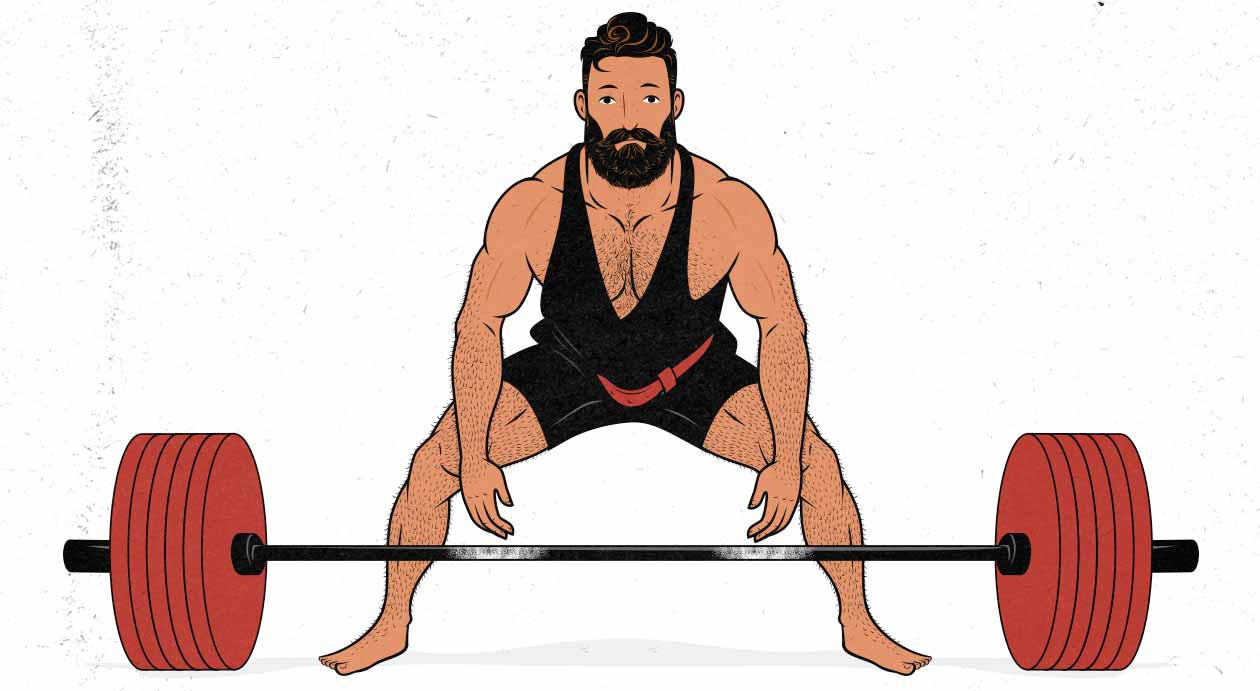
The next thing you need to do is find the correct tightness. You want it to be tight enough to brace against, but you also want to be able to take a full breath into your torso so that you can brace properly. If your breathing feels restricted, it’s too tight. But then on the other hand, if breathing feels easy and comfortable, it’s probably too loose. You want to find that uncomfortable-but-still-breathing middle ground.
I had trouble finding the correct tightness at first, but with a bit of trial and error, it started to make sense. When the belt was too tight, my core was too restricted to properly brace against it. And then when the belt was too loose, it gave me no resistance when I braced. Once I’d tried the too-tight and too-loose settings, though, the correct setting became more obvious.
When it comes to doing the Valsalva manoeuvre, you probably already know how to do it. All you need to do is tighten up your abs as if an enemy were about to punch you in the gut. The only real trick is to make sure that you breathe into your belly and then to hold it there as you do your reps. If you’re doing low-rep sets, you might even hold a single breath through the entire set. Otherwise, take your breaths at either the top or bottom of the repetition. This bracing technique is the same as it always is. There’s no need to modify it when using a lifting belt. The belt is just there to add some external resistance to it.
When Should You Use a Weight Lifting Belt?
When you first start lifting, you should get good at the lifts without a belt. Once your technique feels solid, if you want, you can add a weight belt into the mix. Even if you already know how to brace your core, expect a steep learning curve when you first start using your belt. In fact, similar to black coffee, IPAs, and pungent cheeses, weight belts are rather unappealing at first. It’s only after a few weeks of suffering through it that we realize how wonderful they can be.
To get more practice lifting with a belt, I’d recommend using it during your warm-up routine and lighter sets—perhaps even while curling. Not forever, mind you, just until wearing the belt feels intuitive and natural. Then, once you’ve got the hang of it, reserve it for your heavier working sets of squats, deadlifts, overhead presses, and barbell rows. Some people wear them when benching, too, and that’s fine—you can wear a weight belt whenever you like.
The reason you should wear a weight lifting belt for your squats, deadlifts, overhead presses, and rows is because these are the lifts where it’s important to brace hard, keeping a neutral spine. These are the lifts where your ab and lower-back strength can be limiting factors. And so b
Summary
Weight lifting belts make most people 5–15% stronger on the lifts where torso rigidity is a limiting factor, such as the squat, deadlift, overhead press, and barbell row. That extra strength means you can lift heavier weights, get more reps per set, or train with higher training volumes, and could thus allow you to stimulate a little bit more muscle growth. But keep in mind that the difference is probably pretty small. It won’t make or break your progress.
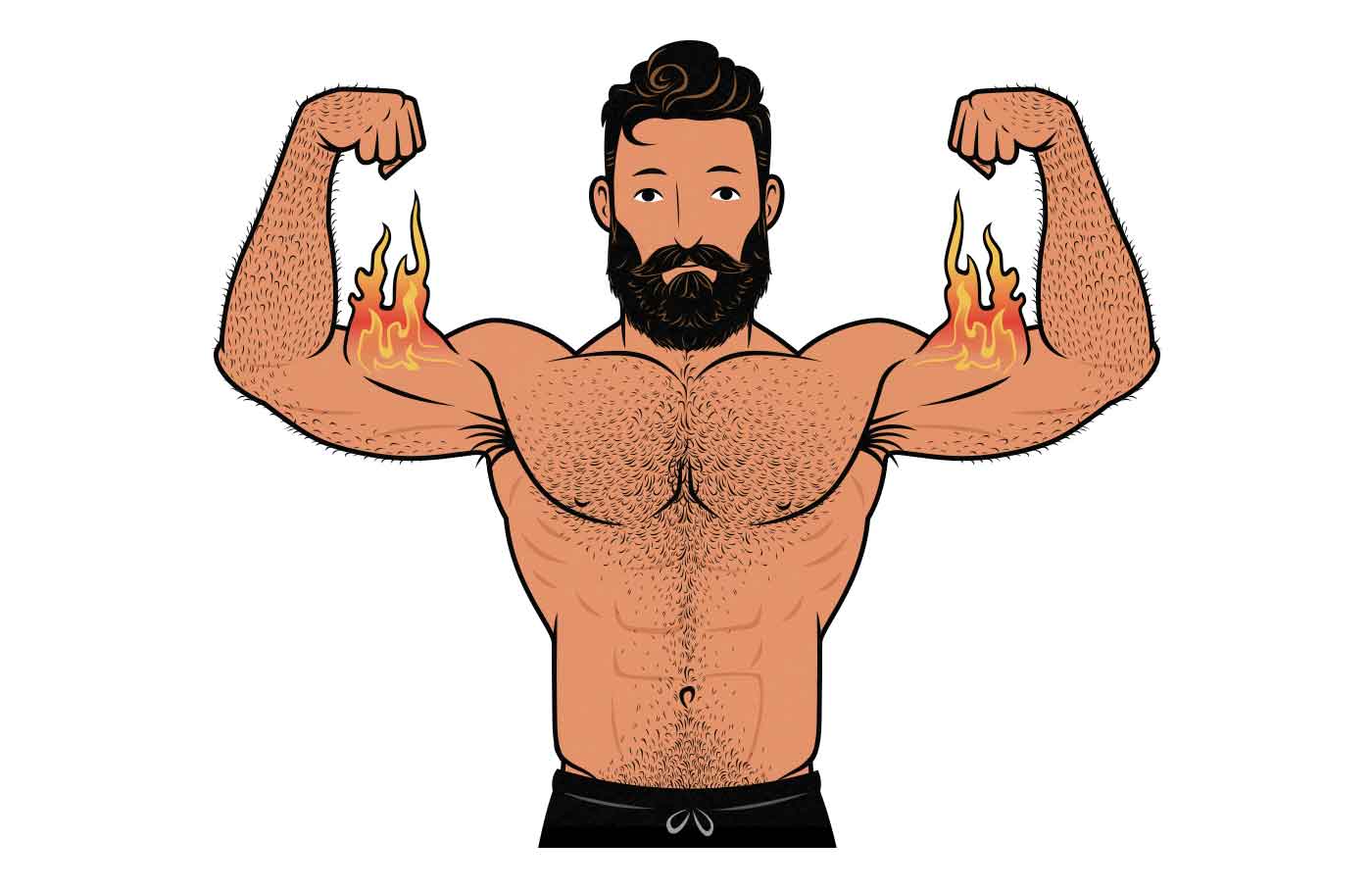
There are also some possible downsides to lifting belts, mostly stemming from the increased intra-abdominal pressure that you get when doing the Valsalva manoeuvre. This extra pressure might be bad for people with varicose veins, varicose veins, hernias, and hemorrhoids, although expert opinion varies and the research is limited. Plus, weight lifting belts don’t seem to significantly reduce the risk of back injuries when lifting weights. So from a health and safety perspective, there’s little benefit to using a weight belt, and possibly even some downsides (depending on the person).
There’s nothing wrong with never getting a weight lifting belt. There won’t ever come a point where you simply must get a weight belt in order to continue building muscle, getting stronger, or keeping your back safe. On the other hand, some people prefer them. It’s a totally optional piece of lifting gear.

And, as always, if you want a customizable workout program (and full guide), check out our Outlift Intermediate Bulking Program. We also have our Bony to Beastly (men’s) program and Bony to Bombshell (women’s) program for skinny and skinny-fat beginners. If you liked this article, you’ll love our full programs.
Shane Duquette is the co-founder of Outlift, Bony to Beastly, and Bony to Bombshell. He's a certified conditioning coach with a degree in design from York University in Toronto, Canada. He's personally gained 70 pounds and has over a decade of experience helping over 10,000 skinny people bulk up.


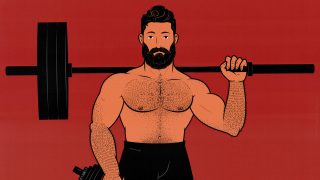
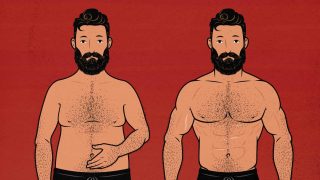
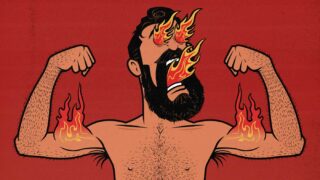

Thanks Shane. Nice article. I’d always wondered about lifting belts but didn’t really see the attraction after trying one once – it was probably double pronged now that I think about it. After reading your article, I figured I’d give belts another go and now I love my new lever belt. Definitely feels good for squats and deadlifts, but took some getting used to at first.
That’s awesome, Jaska. Your experience sounds a lot like mine, yeah. Get a stiff, double-pronged belt and combine it with the rough learning curve, and it can create a rather poor first impression. But get a good belt and get used to it, and it can be a great boon 🙂
There is definitely a use for weight lifting belts in the gym. One style you left out is the double velcro latch, which gives the user an even better fit, and is also easy to release between lifts. I’ve also used one when working on construction sites, when obviously lifting heavy objects, all day long. But there are also different types of back braces that should be worn by people that lift strenuously throughout their work day. But those are designed differently. Maybe do a comparison of those as well.